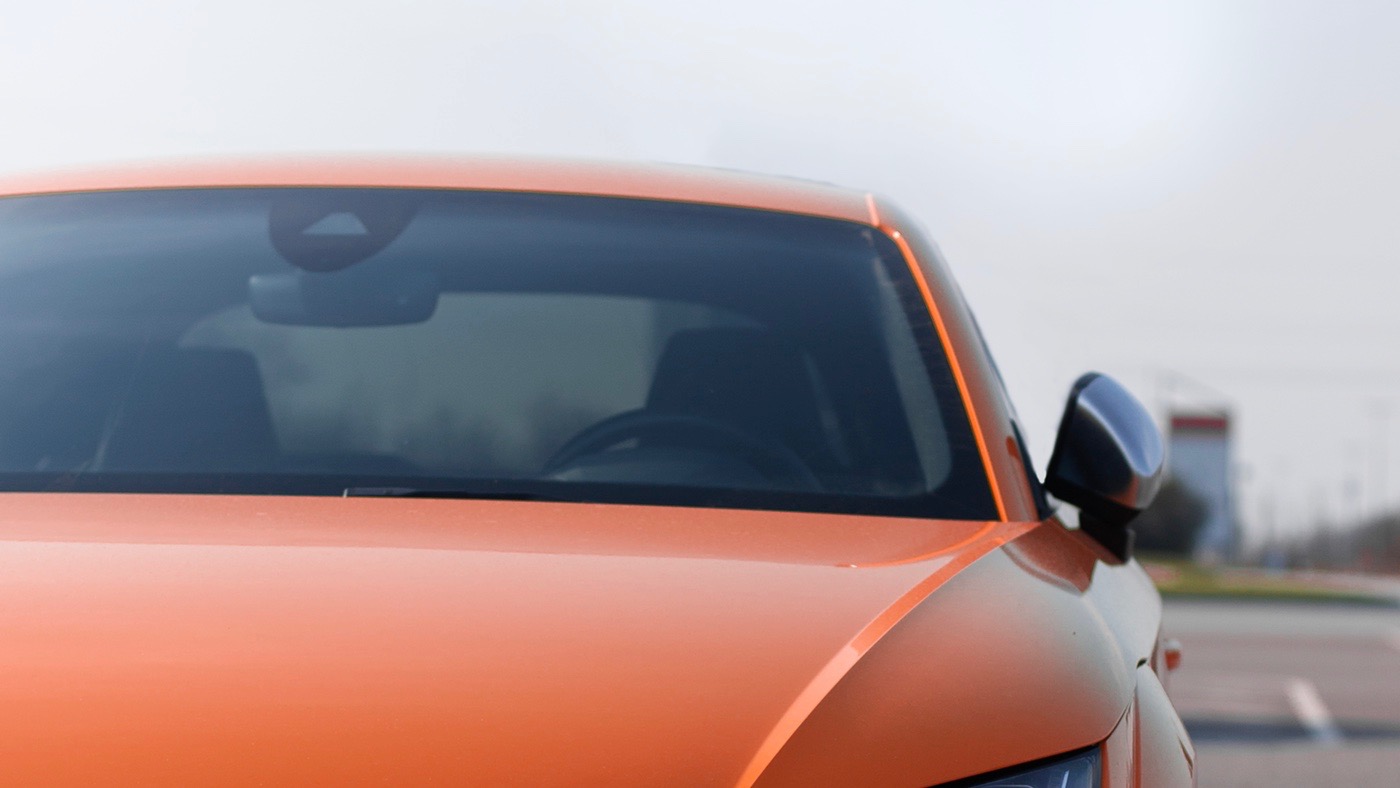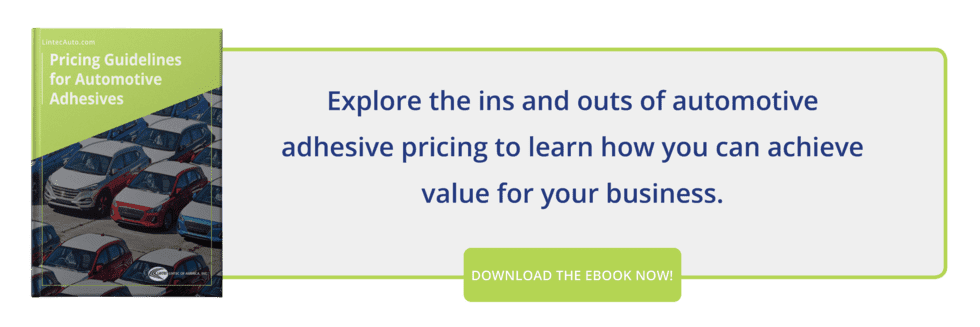Cost Considerations: Window Tinting vs. Automotive Window Adhesive

There are three primary methods for tinting of automotive windows:
- Tinted glass (pigments and dyes mixed directly into the glass)
- Chemical tints (via dipping or spraying glass with a liquid tint)
- Film tints (plastic automotive tinting film adhered as a laminate on the window glass)
Each option has unique practical benefits that could suit it to a factory tinting process.
For instance, an automaker may want to tint part, but not all, of a window. This is especially common on windshields, where a strip at the top is often tinted to diffuse glare from the sun, while the rest of the glass remains fully transparent. In such a case, it makes sense to dip or spray that edge of the glass—it wouldn’t be so simple to manufacture the windshield with pigments and dyes mixed into only the top edge, and the straight cut of an automotive window adhesive may not fit the design aesthetic.
Blackout frames around automotive windows are also commonly sprayed with a black tint or coated with opaque black film. But which method is right for your project? A number of cost considerations can come into play.
Unified vs. Diverse Inventory
It’s frequently most practical to purchase pre-tinted glass from a supplier that mixes tints into the material to your specifications. There’s nothing left to worry about in this case—no further assembly or application to be done.
But what if you have several models of vehicle that all use the same shaped glass components, and may need different tinting configurations (none, 10%, only the rear window, etc.)? Rather than managing purchases and inventory with multiple gradients of automotive glass, it can save costs and provide more flexibility to tint as needed in the factory—say, if consumers have an option to custom-order a tinted package.
However, a spraying or dipping process for whole windows can incur costs similar to other forms of automotive painting—ventilation, separate curing space, costly dispensing equipment, and more. An automotive window adhesive (a tinting film) could be applied right to order, more quickly, and would require less labor or material investment.
Value Added
Some of the net costs of your tinting method aren’t felt upfront but in the performance of your auto parts (and their long-term relative value). An automotive window adhesive film shields the vehicle from UV rays and reflects more hot infrared energy from the sun than tinted glass. This can provide a more comfortable driving experience in warm weather, cooling the cabin by up to 60% and increasing the value of the vehicle.
Safety can also be a consideration. Indeed, tinted automotive glass is generally tempered for high durability, but broken glass will still send shards flying in the event of a crash. Window adhesive films, by comparison, are protective automotive adhesives—they’ll secure the shattered glass in place, safeguarding vehicle occupants from injury. More safety in the vehicle is always a welcome value add.
Permanency vs. Flexibility
Tinted glass and chemical spray tints are permanent solutions—they can’t be removed without replacing the glass. This can be problematic if the window is scratched, as it’s difficult and more costly to repair—especially in the case of spray tints that only provide a thin layer of tint to the glass.
Film tints can be either permanent or temporary, to the preference of the vehicle owner. They also protect the glass from scratches and can be peeled off and replaced in the case of damage—for less than the cost of a new window. This flexibility to protect, modify, or maintain the vehicle gives options to the end-user that aren’t included in traditional tinted, sprayed, or dipped glass.
These are just a few of the cost considerations you’ll have to consider when selecting between automotive window adhesive films, tinting dips and sprays, and manufacturer-tinted glass. Consult with suppliers to weigh the unit price for each method, but don’t forget factors like these that can influence total end value.

